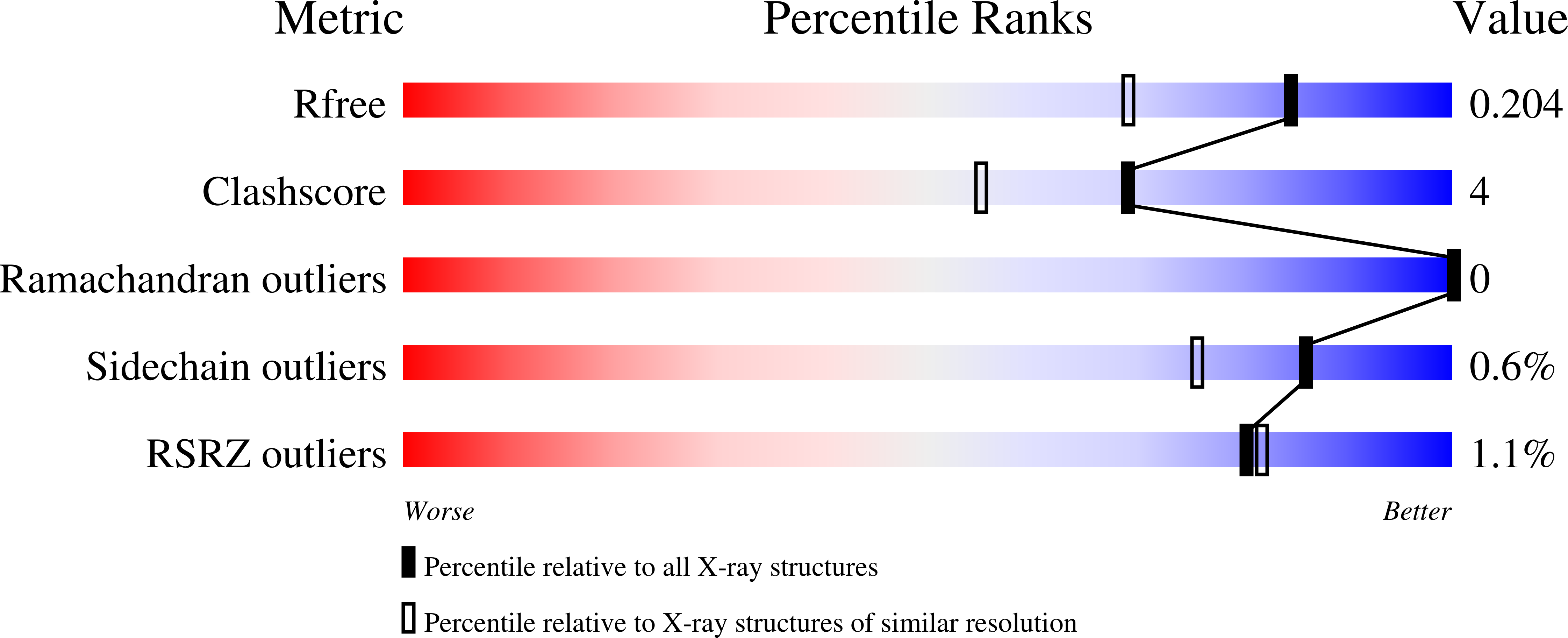The GSH- and GSSG-bound structures of glutaredoxin from Clostridium oremlandii.
Lee, E.H., Kim, H.Y., Hwang, K.Y.(2014) Arch Biochem Biophys 564C: 20-25
- PubMed: 25218089
- DOI: https://doi.org/10.1016/j.abb.2014.09.001
- Primary Citation of Related Structures:
4TR0, 4TR1 - PubMed Abstract:
Glutaredoxin (Grx) is a major redox enzyme that reduces disulfide bonds using glutathione (GSH) as an electron donor. The anaerobic bacterium Clostridium oremlandii possesses a selenocysteine-containing Grx (cGrx1) and a cysteine-containing homolog (cGrx2). Here, the crystal structure of the GSSG-bound form of cGrx2 was determined for the first time at a resolution of 1.95Å. In addition, its monothiol variant cGrx2/C15S in complex with GSH was also determined at a resolution of 1.58Å. cGrx2 is a monomeric protein with an overall structure that consists of the typical thioredoxin fold composed of four α-helices and four β-strands. Two ligands, GSH and GSSG, share a conserved binding site consisting of CPYC, TVP, and CDD motifs. The cysteinyl and γ-glutamyl moieties show similar binding interactions in the two structures, whereas the glycine moiety shows different interactions. Interestingly, the structures revealed that only one GSH moiety of GSSG is sufficient for its binding to the protein. The GSSG-bound structure of cGrx2 was obtained as an oxidized form with a disulfide bond at the CPYC motif. Comparison of the GSH-binding mode in cGrx2 to other known Grxs revealed similarities as well as some diversity.
Organizational Affiliation:
Division of Biotechnology, College of Life Sciences and Biotechnology, Korea University, Seoul, Republic of Korea.


















